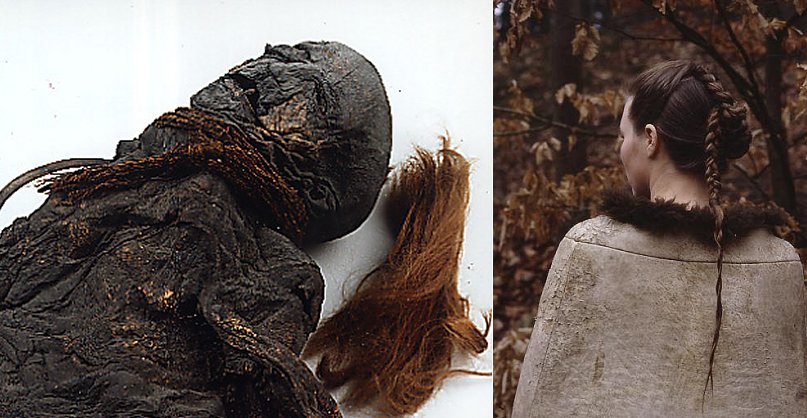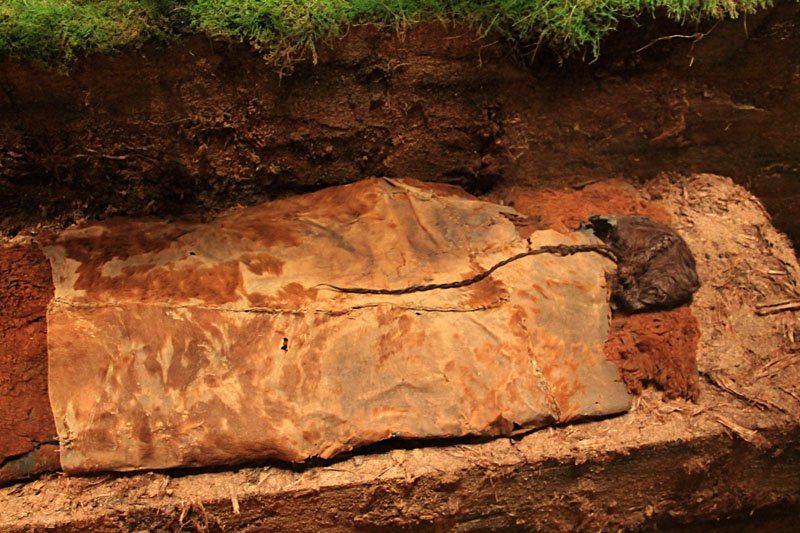Bog Body Of The Elling Woman: Was She Sacrificed To The Gods Because Of Climate Change?
AncientPages.com - It took many years before scientists could finally determine the age and identity of a bog body discovered in 1938 west of Silkeborg, Denmark.
Many of the 1,000 or so bodies or body parts that have been unearthed were never properly examined at the time of the discovery.
Several of the bog bodies were destroyed, but bog mummies that remain have been investigated with modern technology and today, we can learn more about the people who lived and died during the Iron Age in Europe.
Iron Age People Considered Bogs To Be Gateways To The Supernatural World
Bog bodies are the naturally preserved human corpses found in the sphagnum bogs in Northern Europe. Unlike most ancient human remains, bog bodies have retained their skin and internal organs due to the unusual conditions of the surrounding area.
Elling Woman displayed at the Silkeborg Museum in a manner similar to how she was found buried in peat. Note the well-preserved hair. Image credit: J.S. Aber.
From 2,500 to 2,000 years ago, the Germanic tribes of Iron Age northwestern Europe had a habit of killing people and leaving their bodies in bogs.
Bogs were sacred places for Iron Age folk, acting as gateways to the supernatural world, where gifts could be presented to the gods.
Who Was The Elling Woman?
In 1976, archaeologists, forensic examiners, radiologists, forensic dentists and the Carbon-14 laboratory of the National Museum in Denmark started to examine the body found in a pit bog in Bjældskovdal and today we know more about the person who has become known as the Elling Woman.
The Elling Woman, who was discovered by a local farmer, Jens Zakariasson. Examination of the body revealed that she was only 25 years when she met a gruesome death.
She was hanged with a leather thong in 280 B.C. The thong left a V-shaped furrow that is clearly visible in her neck. She was wrapped in one sheepskin cape, and another covered her legs and feet.
Reconstruction of Elling Woman's hairstyle and cloak - Image credit: The Tollund Man
It is logical to assume that the Ellinge Woman was a human sacrifice, but why she was selected is unknown.
See also:
Unsolved Mystery Of The Huldremose Woman: One Of The Best Preserved Bog Bodies Ever Found
Archaeologist Christian Fischer, director of Denmark’s Silkeborg Museum suggests the Ellinge Woman might have been sacrificed during a stressful time of changing climate.
Fischer wants to investigate the possibility that her deaths could be linked to the weather. Maybe if something was going wrong, the people could have felt pressed to give a sacrifice to the gods, he says. And that sacrifice could be gold, silver, or even a human being.
Using carbon-14 method, experts were able to reveal that the Ellinge Woman died at approximately the same time as the Tollund Man, an unusually well-preserved body of an adult male who was approximately 30 to 40 years old when he died.
The Tollund Man is probably the most well-preserved body from pre-historic times in the world. However, the uncertainty connected with the method makes it impossible for to say if Elling Woman and the Tollund Man were placed in the bog at approximately the same time or if the sacrifices took place with an interval of 100 years.
Copyright © AncientPages.com All rights reserved. This material may not be published, broadcast, rewritten or redistributed in whole or part without the express written permission of AncientPages.com
Expand for referencesMore From Ancient Pages
-
 Mystery Of Famous Viking Ruler Rollo: DNA Experts Seek The Truth About His Identity
Featured Stories | Mar 16, 2016
Mystery Of Famous Viking Ruler Rollo: DNA Experts Seek The Truth About His Identity
Featured Stories | Mar 16, 2016 -
 Final Journey Of Ötzi Iceman: More Clues Found In Frozen Moss
Archaeology | Nov 1, 2019
Final Journey Of Ötzi Iceman: More Clues Found In Frozen Moss
Archaeology | Nov 1, 2019 -
 Beethoven’s Genome Offers Clues To Composer’s Health And Family History
DNA | Mar 27, 2023
Beethoven’s Genome Offers Clues To Composer’s Health And Family History
DNA | Mar 27, 2023 -
 Mystery Of The Lost Arctic Civilization- Two Ancient Mummies Found At The Zeleny Yar Necropolis
Archaeology | Jul 20, 2017
Mystery Of The Lost Arctic Civilization- Two Ancient Mummies Found At The Zeleny Yar Necropolis
Archaeology | Jul 20, 2017 -
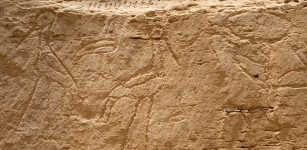 Unknown Rock Inscriptions And Earliest Monumental Hieroglyphs In Egypt Shed New Light On Ancient Writing
Archaeology | Jun 27, 2017
Unknown Rock Inscriptions And Earliest Monumental Hieroglyphs In Egypt Shed New Light On Ancient Writing
Archaeology | Jun 27, 2017 -
 British Museum Is World’s Largest Receiver Of Stolen Goods – Says QC
Archaeology | Nov 12, 2019
British Museum Is World’s Largest Receiver Of Stolen Goods – Says QC
Archaeology | Nov 12, 2019 -
 Unexplained Encounters With A Mysterious Being In South Dakota Reported – Why Is This Happening?
Featured Stories | Jul 9, 2024
Unexplained Encounters With A Mysterious Being In South Dakota Reported – Why Is This Happening?
Featured Stories | Jul 9, 2024 -
 Ancient Mystery Of The Before – Time People – Traces Of An Unknown Lost Race – Part 1
Ancient Mysteries | Apr 3, 2019
Ancient Mystery Of The Before – Time People – Traces Of An Unknown Lost Race – Part 1
Ancient Mysteries | Apr 3, 2019 -
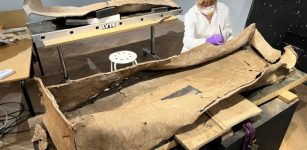 Ancient Roman Coffin Found In Leeds Revealed To The Public For The First Time
Archaeology | Apr 22, 2024
Ancient Roman Coffin Found In Leeds Revealed To The Public For The First Time
Archaeology | Apr 22, 2024 -
 How Neanderthal Language Differed From Modern Human – They Probably Didn’t Use Metaphors
Human Beginnings | May 21, 2024
How Neanderthal Language Differed From Modern Human – They Probably Didn’t Use Metaphors
Human Beginnings | May 21, 2024 -
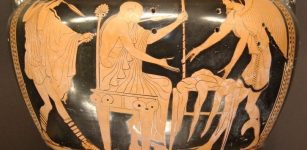 Prophet King Phineus Revealed The Future To Humans And Unleashed God Zeus’ Fury
Featured Stories | Nov 20, 2019
Prophet King Phineus Revealed The Future To Humans And Unleashed God Zeus’ Fury
Featured Stories | Nov 20, 2019 -
 Nimerigar: Mythological Race Of Little People Living In Wyoming
Featured Stories | Jun 7, 2017
Nimerigar: Mythological Race Of Little People Living In Wyoming
Featured Stories | Jun 7, 2017 -
 Treasure Trove Of Assyrian Kings Found In Tunnels Excavated And Plundered By Terrorists
Archaeology | Apr 20, 2020
Treasure Trove Of Assyrian Kings Found In Tunnels Excavated And Plundered By Terrorists
Archaeology | Apr 20, 2020 -
 Goddess Huitaca – Moon Goddess Of Intoxication, Joyful Life And Unlimited Pleasures In Muisca Mythology
Featured Stories | Mar 14, 2021
Goddess Huitaca – Moon Goddess Of Intoxication, Joyful Life And Unlimited Pleasures In Muisca Mythology
Featured Stories | Mar 14, 2021 -
 Tiresias – Unusual Prophet Who Turned Into A Woman For Seven Years
Featured Stories | May 16, 2020
Tiresias – Unusual Prophet Who Turned Into A Woman For Seven Years
Featured Stories | May 16, 2020 -
 Unique Maya Center Of Copán With History Recorded In 2500 Hieroglyphics
Civilizations | Nov 7, 2018
Unique Maya Center Of Copán With History Recorded In 2500 Hieroglyphics
Civilizations | Nov 7, 2018 -
 Was 4,000-Year-Old Seahenge In Norfolk Built To Battle Climate Change?
Archaeology | May 31, 2024
Was 4,000-Year-Old Seahenge In Norfolk Built To Battle Climate Change?
Archaeology | May 31, 2024 -
 On This Day In History: William Caxton Printed His First Book – On Nov 18, 1477
News | Nov 18, 2016
On This Day In History: William Caxton Printed His First Book – On Nov 18, 1477
News | Nov 18, 2016 -
 Mysterious Maya Snake Kings And Their Powerful Kingdom In The Jungle Reveal More Ancient Secrets
Civilizations | Apr 23, 2018
Mysterious Maya Snake Kings And Their Powerful Kingdom In The Jungle Reveal More Ancient Secrets
Civilizations | Apr 23, 2018 -
 Faces Of Queen Nefertiti And King Akhenaten Reconstructed Using Artificial Intelligence
News | Mar 22, 2021
Faces Of Queen Nefertiti And King Akhenaten Reconstructed Using Artificial Intelligence
News | Mar 22, 2021

